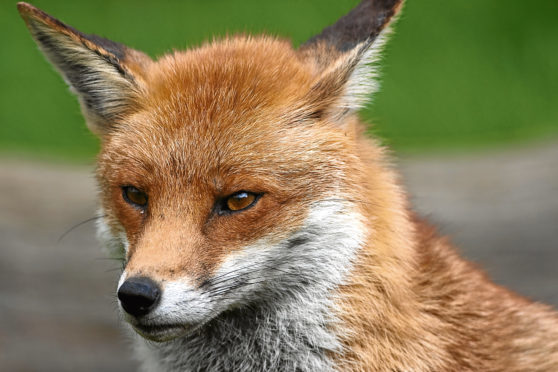A whale washes up dead on an Angus beach and makes big headlines. A mass stranding of whales on an Australian beach makes national television bulletins over here, 10,000 miles away.
The Blue Planet series generated eight hours of national prime time television, followed by Blue Planet II which generated seven more, followed by an international concert tour. Audience figures were unprecedented.
A march down the Royal Mile to the Scottish Parliament at the weekend by hundreds of animal rights activists to protest against a law that is supposed to stop fox hunting in Scotland, but doesn’t, registered barely a tremor of interest in the Scottish and the British media (one honourable mention to The Sunday Post), and public response is characterised by indifference.
You could argue that the context was hardly electrifying – an attempt to persuade the Scottish Government to amend its fox hunt-banning Protection of Wild Mammals Act of 2002 so that a loophole is closed, a loophole that still allows fox hunts to hunt foxes under the pretext of ‘pest control’.
The hunts even offer their services to farms and estates as a bizarre species of mounted pest control agency.
The march was timed to draw attention to Scottish ministers’ plans to publish a report before the summer recess on a review of the Protection of Wild Mammals Act by Lord Bonomy, and which suggests there are “grounds to suspect” that fox hunts are still hunting foxes.
As if it was determined to thwart the possibility of the issue overheating, the Scottish Government issued a statement of mind-numbing bureaucrat-speak: “A stakeholder group has been established to develop a new code of practice and assess the feasibility of a new monitoring scheme.”
Red Planet
I have a better idea: Let’s have an eight-hour, prime-time television series highlighting the obscene treatment of the red fox all across the Scottish and for that matter the British countryside. We can call it Red Planet.
Yes, I know that’s not going to happen but it’s still a better idea than a ‘stakeholder’ talking shop (and how I would love to see the word ‘stakeholder’ banned along with the fox hunts).
The thing is, that much as I admire the ambition and the passion of the march organisers – the League Against Cruel Sports, OneKind, and the International Fund for Animal Welfare – fox hunting is the wrong target. It is noticeable that none of the mainstream nature conservation organisations was involved.
But there is – or at least there should be – one issue that could unite all the nature conservation people and all the animal rights people, and that is an act to give total legal protection to the red fox.
Otters, badgers, red squirrels and pine martens have it, for example, and there is no reason why foxes should not have it.
Protect the fox under law, and you effectively ban the fox hunts as well as introduce a more civilised regime to land management.
How can it possibly make sense to construct an act that ‘provides for the necessary level of protection for foxes and other wild mammals, while allowing effective and humane control of these animal where needed…’ which is what Lord Bonomy was asked to scrutinise.
At what point does a wild mammal in need of protection by law become a pest that needs to be controlled? And who gets to decide?
David Stephen, a Scottish naturalist of distinction and a campaigner on behalf of the country’s wild mammals all his life, wrote that he never yet saw the fox carrying the key to the henhouse.
His point being that the fox has become the scapegoat for lazy farming techniques and lazy estate management.
And people hunt foxes, not because they are mad about pest control, but because they like hunting foxes.
Humane?
There are two important adjectives in that quotation from Lord Bonomy’s job description: “effective” and “humane”.
Killing foxes is not effective. All the more rational and thoughtful land managers I have talked to agree that if you leave foxes alone, you don’t have a fox problem, that problems arise when you kill them indiscriminately, and cause them to behave irrationally.
And killing foxes is not ‘humane’, regardless of whether they are hunted, shot, trapped or poisoned.
So the job for animal rights activists, nature conservationists and Scottish Government ministers is a united stance against those land managers who think that good land management means killing everything that they don’t like, or find inconvenient in their pursuit of Victorian landowning practice.
The Scottish Government wants to be seen to run a modern, civilised and thoughtful country.
But the country is the land we share with every one of nature’s tribes, and a country that picks and chooses between those species it will permit to live and those that it won’t because it doesn’t like them (or worse, because it likes to kill them), is not modern, civilised or thoughtful.
I still think Red Planet gets the job done.










